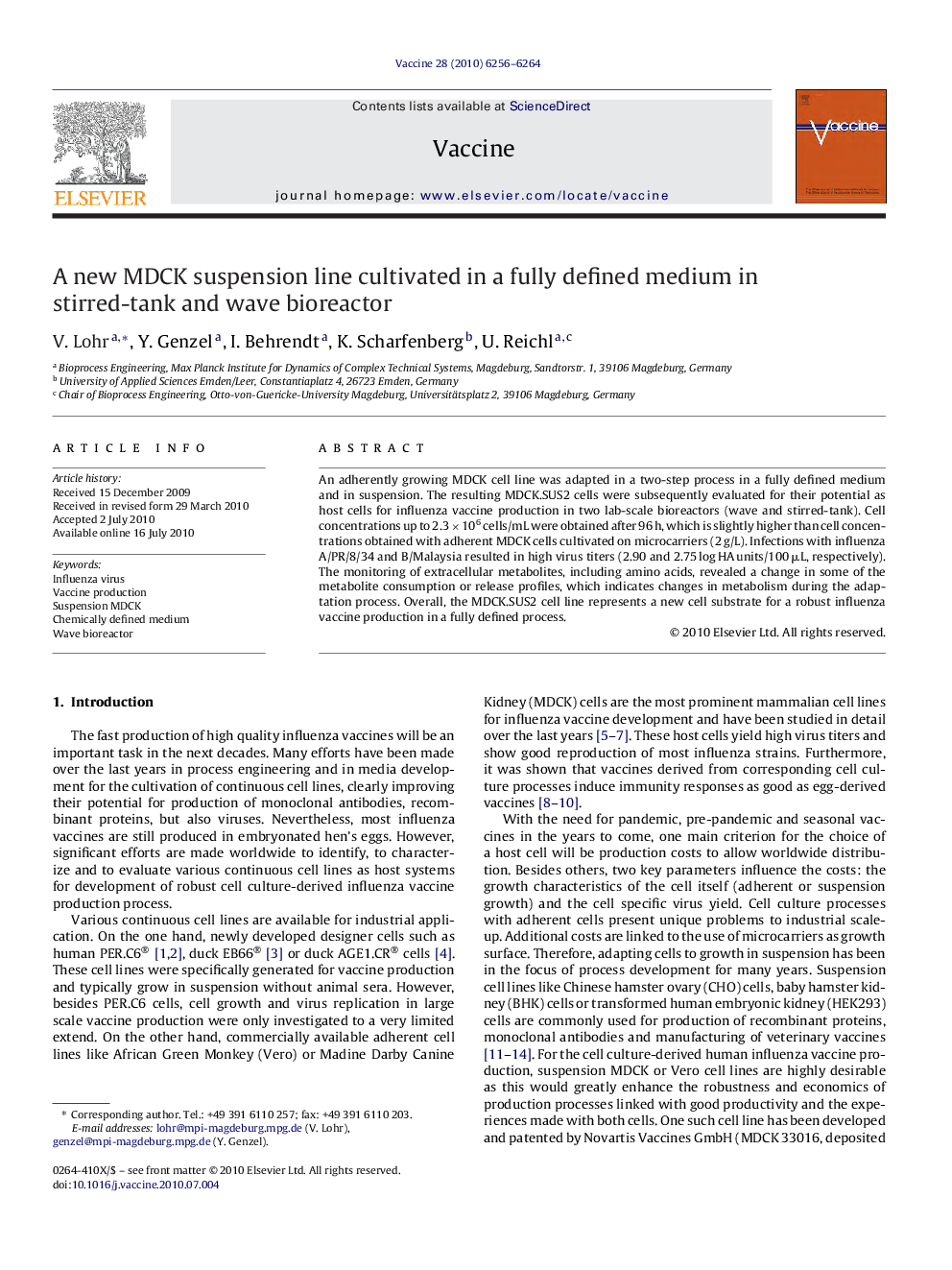| Article ID | Journal | Published Year | Pages | File Type |
|---|---|---|---|---|
| 2404271 | Vaccine | 2010 | 9 Pages |
An adherently growing MDCK cell line was adapted in a two-step process in a fully defined medium and in suspension. The resulting MDCK.SUS2 cells were subsequently evaluated for their potential as host cells for influenza vaccine production in two lab-scale bioreactors (wave and stirred-tank). Cell concentrations up to 2.3 × 106 cells/mL were obtained after 96 h, which is slightly higher than cell concentrations obtained with adherent MDCK cells cultivated on microcarriers (2 g/L). Infections with influenza A/PR/8/34 and B/Malaysia resulted in high virus titers (2.90 and 2.75 log HA units/100 μL, respectively). The monitoring of extracellular metabolites, including amino acids, revealed a change in some of the metabolite consumption or release profiles, which indicates changes in metabolism during the adaptation process. Overall, the MDCK.SUS2 cell line represents a new cell substrate for a robust influenza vaccine production in a fully defined process.
